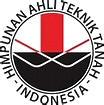Analisis Ketersediaan Air DAS Sausu Untuk Kebutuhan Air Pada D.I. Sausu Bawah, Kabupaten Parigi Moutong
DOI:
https://doi.org/10.22487/renstra.v1i2.32Keywords:
dependable discharge, water availability, water needs, Sausu watershed, water balanceAbstract
This study aims to grasp and analyze the water availability in Sausu Watershed and the need of water in Lower Sausu Irrigation Scheme. The research begins with data collection and hydro-climatological analysis to determine whether the water is enough or not enough to be used during a hydrological period. To obtain the comparison between the needs and availability of water, a hydro-climatological analysis and calculation of water need are carried out. Methods that used namely the Penman Modification method and the F.J Mock method. Penman modification method is used to calculate monthly evapotranspiration (ETo) by taking into account climatological factors such as air temperature, wind speed, solar radiation and relative humidity. By applying the F.J.Mock method for calculating the water availability, the amount of water flow from the rain, characteristics of the drainage area and evapotranspiration can be calculated. Based on the results of data analysis for Sausu watershed area of 568.64 km², it shows that the average value of water availability in the lower intake for 1 year is app. 30.19 m³/sec with the maximum value of app. 48.149 m3/sec and the minimum is app. 4.134 m3/sec. Whereas the maximum water demand in the Lower Sausu irrigation scheme is app. 1.77 m³/sec with the minimum of 0.04 m3 /sec and the average is app. 0.49 m3/sec. It can be concluded that the water availability in the Sausu River Basin is sufficient to meet the water needs of the Lower Sausu Irrigation Scheme throughout the year, or there is a continuous surplus.
Downloads
References
D.F. Dengo, J.S.F. Sumarauw, and H. Tangkudung, “Analisis Neraca Air Sungai Ranowangko,” Tekno, vol. 14, no. 65, p. 1, 2016.
C. Asdak, Hidrologi dan Pengelolaan Daerah Aliran Sungai,” Yogyakarta: Gajah Mada University Press, 2002.
Sekretariat Negara, Undang-Undang Nomor 17 tahun 2019 Tentang Sumber Daya Air, Jakarta: Pemerintah RI: 2019.
Sekretariat Negara, Peraturan Pemerintah Republik Indonesia Nomor 37 Tahun 2012 tentang Pengelolaan Daerah Aliran Sungai, Jakarta: Pemerintah RI: 2012.
E.M. Wilson, Hidrologi Teknik, Bandung: Penerbit ITB, 1993.
R.K. Linsley, and J.B. Franzini, Teknik Sumber Daya Air, Jilid 2, Jakarta: Penerbit Erlangga, 1996.
S. Arsyad, Konservasi Tanah dan Air, Bandung: Penerbit IPB, 2006.
Direktorat Jenderal Sumber Daya Air, Peta Daerah Irigasi Sausu Kabupaten Parigi Moutong, Palu: Balai Wilayah Sungai Sulawesi III, 2015.
Ditjen Sumber Daya Air, Standar Perencanaan Irigasi; Kriteria Perencanaan – Bagian Perencanaan Jaringan Irigasi, KP.01, Jakarta: Badan Penerbit Pekerjaan Umum Kementerian Pekerjaan Umum, 2011.
F.J. Mock, Land Capability Apraisal Indonesia, Water Availability Apraisal, Newyork: UNDP, 1973.
D. Chandrasasi, L.M Montarcih, and R.W. Wulan, “Analysis Using the F. J. Mock Method for Calculation of Water Balance in the Upper Konto Sub-Watershed,” IOP Conference Series: Earth and Environmental Science, vol. 437, 012019, p. 1, 2020.
N. Febrianti, Analisis Neraca Air DAS Sausu Untuk Kebutuhan D.I. Sausu Atas (Tugas Akhir), Palu: Jurusan Teknik Sipil Fakultas Teknik Universitas Tadulako, 2019.
S.A. Nurdin, D.N. Khaeruddin, and K.F. Sulistyani, “Analisis Ketersediaan Air dengan Metode F. J. Mock di DAS Lowo Rea Kabupaten Ende untuk Kebutuhan Air Irigasi”, Prosiding Seminar Nasional Teknologi Industri, Lingkungan dan Infrastruktur, vol. 1, p. 1, 2018.
P.J. Osly, I. Ihsan, R.E. Ririhena, and F.D. Araswati, “Analisis Kebutuhan Dan Ketersediaan Air Kabupaten Manokwari dengan Model Mock”, Jurnal Infrastruktur, vol. 5, no. 2, p. 59, 2019.
W. Bunganaen, N.S. Karbeka, and E.E. Hangge, “Analisis Ketersediaan Air Terhadap Pola Tanam dan Luas Areal Irigasi Daerah Irigasi Siafu”, Jurnal Teknik Sipil, vol. 9, no. 1, 2020.
Downloads
Published
How to Cite
Issue
Section
License
Copyright (c) 2020 REKONSTRUKSI TADULAKO: Civil Engineering Journal on Research and Development

This work is licensed under a Creative Commons Attribution 4.0 International License.







 This work is licensed under a
This work is licensed under a 


